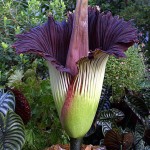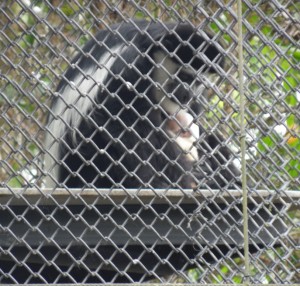‘Stinky 2’ to Debut Soon
It’s going to get smelly again around the Pana`ewa Rainforest Zoo and Gardens.
For the second time in three years, one of the zoo’s “corpse” plants is getting ready to bloom.
Jason Armstrong, spokesman for the county Department of Parks and Recreation, said “Stinky 2” has a bud more than three feet in height that’s expected to flower within a week or so.
Amorphophallus titanium, which is endemic to western Sumatra where it grows in openings in the rainforest canopy, earned its nickname from a distinctive aroma that resembles rotting flesh.
The odor attracts beetles and flesh flies that pollinate the plant.
The plant grows from a corm that can weigh more than 200 pounds.
Stinky 2, and its predecessor which drew large crowds when it blossomed in 2011, was donated to the zoo by artist Hiroshi Tagami in 2002. It is growing in the exhibit next to the zoo’s feral pigs.
In other zoo news, there’s a new black-and-white colobus monkey at the Panaewa facility.
The all-white baby was born Aug. 10. Its gender is not yet known.
The newborn’s father, Mo, was purchased by the non-profit Friends of the Zoo in 2009. Its mother, Mindy, was acquired from the same Florida source in April 2012.
“It was hoped that the pair would mate, adding to the population of approximately 200 colobus monkeys living in zoos throughout the world,” Armstrong said in a statement.
“We’re delighted with the birth and happy to introduce the newborn to the public,” said Pam Mizuno, manager of the Pana‘ewa Recreation Complex that includes an equestrian center.
The zoo is located off Stainback Highway south of Hilo. The only tropical rainforest zoo in the nation, it features more than 100 varieties of palms and 80 animal species including the nene goose, the Hawaii state bird, and a white Bengal tiger named Namaste.
Admission to the zoo is free.











